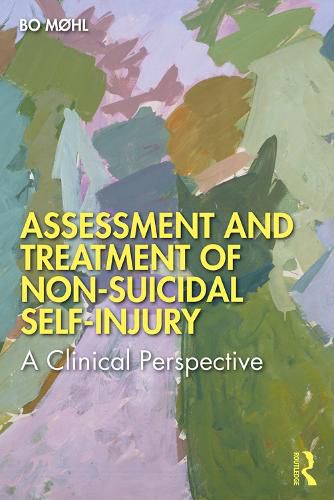Readings Newsletter
Become a Readings Member to make your shopping experience even easier.
Sign in or sign up for free!
You’re not far away from qualifying for FREE standard shipping within Australia
You’ve qualified for FREE standard shipping within Australia
The cart is loading…






Assessment and Treatment of Non-Suicidal Self-Injury: A Clinical Perspective is the ideal primer for anyone who works with people who self-injure. Profiling who is affected as well as what their behaviour includes, the book explores the range of factors behind why people self-injure, from the influence of social media to the need for self-regulation, and offers recommendations for both assessment and outpatient treatment.
Throughout, the book is permeated by profound respect for those who use self-injury in an attempt to live a good life, while conveying a deep understanding of the challenges that self-injury presents for family members and treatment professionals. It recognizes that the behaviour can spread in hospital wards or other institutional setting, introducing the concept of self-injury by proxy, and assesses the range of therapies available, including CBT, MBT, ERGT and family therapy. Each chapter is complemented by clinical vignettes.
In an era when a great number of professionals will come into contact with someone who self-injures - including teachers, social workers and nurses as well as therapists - The Assessment and Treatment of Non-Suicidal Self-Injury is an invaluable resource that examines both the causes and the treatments available.
$9.00 standard shipping within Australia
FREE standard shipping within Australia for orders over $100.00
Express & International shipping calculated at checkout
Assessment and Treatment of Non-Suicidal Self-Injury: A Clinical Perspective is the ideal primer for anyone who works with people who self-injure. Profiling who is affected as well as what their behaviour includes, the book explores the range of factors behind why people self-injure, from the influence of social media to the need for self-regulation, and offers recommendations for both assessment and outpatient treatment.
Throughout, the book is permeated by profound respect for those who use self-injury in an attempt to live a good life, while conveying a deep understanding of the challenges that self-injury presents for family members and treatment professionals. It recognizes that the behaviour can spread in hospital wards or other institutional setting, introducing the concept of self-injury by proxy, and assesses the range of therapies available, including CBT, MBT, ERGT and family therapy. Each chapter is complemented by clinical vignettes.
In an era when a great number of professionals will come into contact with someone who self-injures - including teachers, social workers and nurses as well as therapists - The Assessment and Treatment of Non-Suicidal Self-Injury is an invaluable resource that examines both the causes and the treatments available.